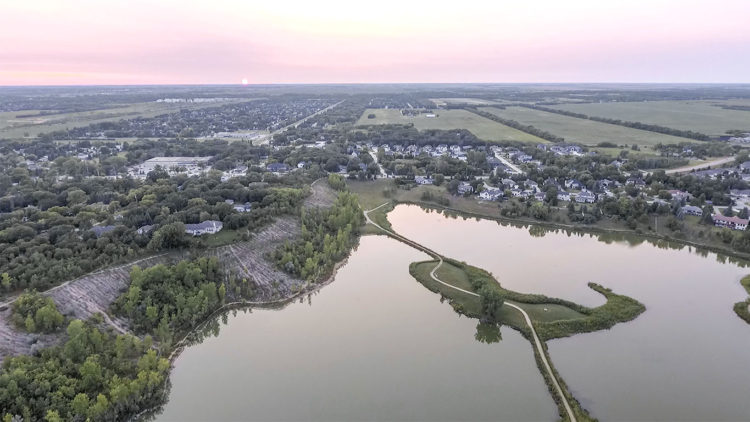
East St. Paul is a rural municipality in Manitoba, Canada. It is located north-east of and adjacent to the city of Winnipeg, and is part of the Winnipeg Metropolitan Area. The municipality was formed on 3 November 1915 when the municipality of St. Paul (1888-1914) was subdivided into West St. Paul and East St. Paul, with the Red River acting as the dividing line. It encompasses 41 square kilometres.
Recreation
East St. Paul has a recreation centre, which offers curling and ice hockey programs, and an outdoor recreation complex for soccer and baseball. An 18-hole golf course (The Meadows) and tennis courts are used by residents and nonresidents in the summer, as well as a toboggan hill and an outdoor skating on a frozen lake in the winter. In addition to the Trans Canada Trail and the Duff Roblin Parkway Trail, the municipality also contains several other walking trails and pathways, like the Bottomly Creek Trail and the Pritchard Farm Trails.
A habitat rehabilitation project at Birds Hill, Manitoba transformed a depleted gravel pit into Silver Springs Park, with trails, a lake, and homes built along part of its perimeter. The pit dates to the late 19th century, when the Canadian Pacific Railway needed gravel ballast for its rail lines. The deposit was later worked to serve Winnipeg’s needs for aggregate. Over the years, more than 20 million tonnes of gravel were removed from the site. The depleted quarry was graded and landscaped with native grasses and more than 1,200 trees and shrubs.Geese, ducks, terns, gulls, American white pelicans, songbirds, foxes, rabbits, western painted turtles, muskrats and deer are frequently observed.
Communication
East St. Paul along with neighbouring municipalities West St. Paul and St.Clements were jointly awarded in 2016 an Honourable Mention in the Organization of the Year category for their success in improving public participation and communication from the International Association of Public Participation. According to the IAP2, in the past three years, these municipalities have evolved from places where IAP2 principles were effectively unknown to becoming P2 champions and leaders on enhancing transparency, public buy-in and trust through public participation. Public concerns have been addressed and strong mandates were secured on a variety of projects, from recreation, roads, and farmers markets to major sewer initiatives

